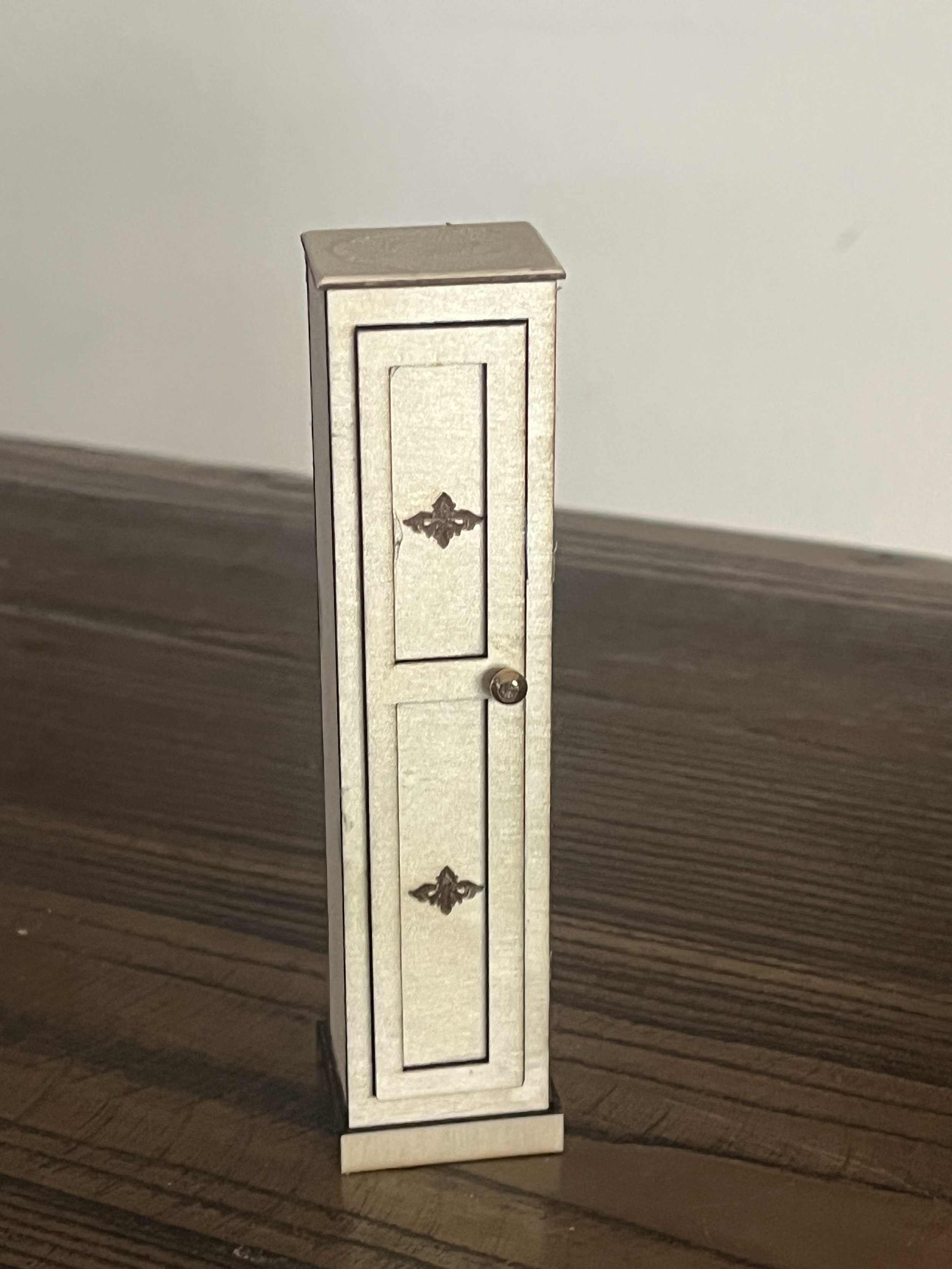 Image 1 of 4
Image 1 of 4

 Image 2 of 4
Image 2 of 4

 Image 3 of 4
Image 3 of 4

 Image 4 of 4
Image 4 of 4





Victorian Antique Pantry Pattern Scale 1:12 Laser Cut Pattern Electronic File V4 PM025
For Age: 14 Years and older. This is meant for an experienced dollhouse builder. Parts are small and could be a choking hazard.
Pattern was set up for use with a Laser Cutter, however pieces can be cut by hand with a sharp exactor knife or other tools or machines you might prefer.
Plan your design, paint, hardware, and aging before building. For example, the photo of the pantry above is yellow, and was assembled and then painted.
For Age: 14 Years and older. This is meant for an experienced dollhouse builder. Parts are small and could be a choking hazard.
Pattern was set up for use with a Laser Cutter, however pieces can be cut by hand with a sharp exactor knife or other tools or machines you might prefer.
Plan your design, paint, hardware, and aging before building. For example, the photo of the pantry above is yellow, and was assembled and then painted.
For Age: 14 Years and older. This is meant for an experienced dollhouse builder. Parts are small and could be a choking hazard.
Pattern was set up for use with a Laser Cutter, however pieces can be cut by hand with a sharp exactor knife or other tools or machines you might prefer.
Plan your design, paint, hardware, and aging before building. For example, the photo of the pantry above is yellow, and was assembled and then painted.
HELPFUL SUGGESTIONS
Wood thickness: 1/16 Inch (Basswood, Plywood or Balsa). The type of wood should be sturdy enough to last. The softer the wood the gentler you will need to be when assembling furniture and will predict how long the furniture will last. We softened/sanded edges and corners on the furniture we build, to give a more rounded edge.
Glue: We recommend using tacky glue.
Tools: 1,2,3 blocks help to keep build straight. Multipurpose clips and clamps along with your regular tools used for working material you choose.
Abbreviation R&P: R&P in these instructions, means to remove the specified part from the wood sheet carefully by cutting or punching the piece out from the front to the back of the wood sheet. Then painting parts before assembling.